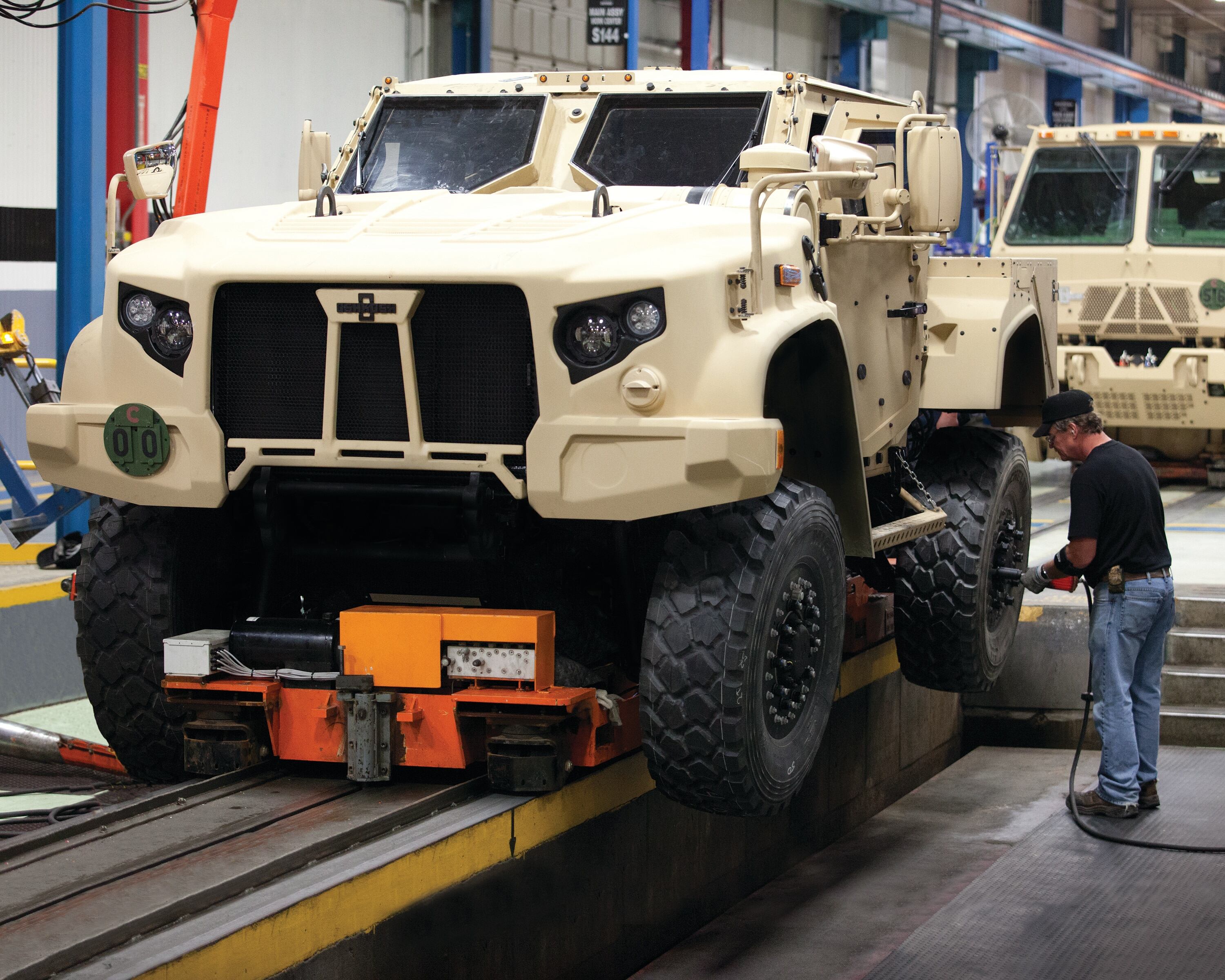Service wants to replace 3,270-vehicle Humvee inventory
WASHINGTON — The U.S. Air Force has quietly inserted itself into the Joint Light Tactical Vehicle program with a request of 140 units in fiscal 2018, but the service is poised to buy hundreds — and perhaps even thousands — more vehicles if it can find the funding in future years.
Although budget documents show no further procurement planned for FY19 through FY22, the Air Force does not intend to see its JLTV acquisition end in FY18. The service wants to replace its entire 3,270-unit Humvee inventory, although the details are fuzzy on how much of the fleet can be recapitalized and when, Air Force spokeswoman Laura McAndrews wrote in response to emailed questions from Defense News.
“We would like to eventually phase out the entire High Mobility Multi-Wheeled Vehicles fleet with the newer vehicles,” she said, using an alternative name for the Humvee. “We are still formalizing our fleet management strategy of when we will acquire all of our hoped-for new vehicles and to what units they will go and in what order.”
The JLTV program was spearheaded by the Army and Marine Corps, which plan to buy a whopping 49,099 and 5,500 vehicles, respectively. The selection of Oshkosh as the JLTV manufacturer in 2015 was made with much fanfare, as the contract is the services’ largest vehicle program in decades.
In contrast, the Air Force’s decision to enter the program played out almost entirely behind the scenes. This January, Defense News broke the story that service officials were interested in purchasing the JLTV for security personnel that defend its missile launch facilities — although McAndrews stated that the service began looking for alternatives to replace the Humvee in 2012.
Air Force representatives had even traveled to Marine Corps Base Quantico last December for demonstrations and briefings before posting a request for information on tactical vehicles later that month.
“We ascertained the JLTV was the best fit for us because we rely on the expertise of the Army and Marines when it comes to acquiring tactical vehicles,” McAndrews explained, adding that the service did not conduct any independent testing.
The Air Force then requested $52.5 million in FY18 to procure 140 JLTVs. Of that sum, it plans to buy 46 utility variants (a two-seat version with a wide bed like a pickup truck); 48 general-purpose variants, which are the standard four-seat version; and 46 heavy-gun carrier variants, which have space for a gunner.
Those vehicles will be operated by Air Force security forces, explosive ordnance disposal teams, pararescue and personnel recovery units, tactical air control party teams, and special tactics forces, McAndrews stated.
The Air Force plans to begin fielding the JLTV in FY19, when full-rate production begins. Oshkosh spokeswoman Alexandra Hittle told Defense News that the company has the capability to meet the Air Force’s emerging demand, as well as that of the Army and Marine Corps.
“Additional buys will not affect USMC and Army deliveries,” she said. “Oshkosh stands ready to produce JLTVs for all services to ensure all of our troops receive the next-generation equipment they need to successfully complete their missions.”
Although the Air Force operates fewer Humvees than the Army and Marine Corps, its vehicles are experiencing similar problems in terms of performance and maintainability. The average age of the fleet is 10 years old, and users have commented on the Humvee’s lack of power and agility as more and more armor has been loaded onto the vehicles, McAndrews explained.
RELATED

A few specific maintenance problems have also cropped up, particularly with vehicles operated in the hot temperatures of the Middle East.
“The biggest challenge with the HMMWV fleet is the injector pumps for vehicles in the Central Command area of responsibility, which require more frequent replacement due to the environment and operating them in high temperatures for long periods of time,” McAndrews stated. “A secondary issue is the braking system for up-armored vehicles. The added weight from the up-armor puts added strain on the brake pad, again necessitating more frequent maintenance.”
Valerie Insinna is Defense News' air warfare reporter. She previously worked the Navy/congressional beats for Defense Daily, which followed almost three years as a staff writer for National Defense Magazine. Prior to that, she worked as an editorial assistant for the Tokyo Shimbun’s Washington bureau.








